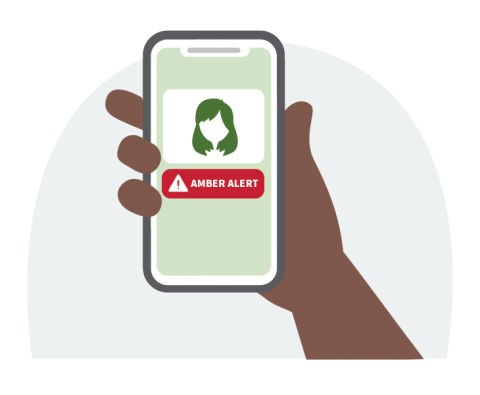Flood Alerts Explained: Your Guide To Flood Safety

Table of Contents
Types of Flood Alerts and What They Mean
Understanding the different levels of flood alerts is the first step towards effective flood safety. Different alerts signify varying levels of flood risk and require different responses.
Flood Watch
A flood watch means that conditions are favorable for flooding. While flooding is not imminent, it's a strong possibility. This is the time to prepare.
- Triggers: Heavy rainfall, rapid snowmelt, dam or levee failures (potential), high tides combined with heavy rain.
- Action: Monitor weather reports closely, prepare your emergency kit, review your evacuation plan, and move valuable items to higher ground. Don't wait for a flood warning – proactive preparation is key during a flood watch.
Flood Warning
A flood warning indicates that flooding is occurring or is imminent. This is a critical alert requiring immediate action.
- Triggers: Rivers overflowing their banks, flash floods developing, dam or levee failures (actual).
- Action: Evacuate if instructed to do so by authorities. Move valuables to upper floors or a safe location. If you’re unable to evacuate, move to the highest level of your home. Avoid driving through floodwaters.
Flood Advisory
A flood advisory signifies that minor flooding is possible. While the risk is lower than with a warning, caution is still warranted.
- Difference from Warning: An advisory indicates a less severe threat than a warning. Flooding may occur in low-lying areas or poor drainage areas.
- Action: Stay informed about the situation, avoid driving through flooded areas, and be prepared for potential localized flooding.
Sources of Flood Alerts and How to Receive Them
Staying informed is paramount. Several sources provide crucial flood alerts, allowing you to stay ahead of potential danger.
National Weather Service (NWS) and Other Government Agencies
The National Weather Service (NWS) is your primary source for weather-related alerts, including flood alerts. Access their website (weather.gov) or download their mobile app for real-time updates. Many local government agencies also issue specific flood alerts for their regions. Signing up for alerts specific to your address is essential.
Local News and Media
Local news channels, radio stations, and television broadcasts provide crucial updates and localized information during flood events. Having multiple sources ensures you receive comprehensive information.
Emergency Alert Systems
Wireless Emergency Alerts (WEA) and other emergency alert systems send critical information directly to your mobile device. Ensure these alerts are enabled in your phone's settings.
Creating a Flood Preparedness Plan
Proactive planning is essential for surviving a flood. This involves several key steps.
Developing an Evacuation Plan
- Evacuation Routes: Identify multiple escape routes from your home and community.
- Assembly Points: Determine a designated meeting place for family members after evacuation.
- Emergency Kit: Prepare a kit including essential supplies like water, food, medications, first-aid supplies, and important documents.
- Communication Plan: Establish a communication plan with family members in case you're separated during a flood.
Protecting Your Home and Property
- Home Protection: Elevate electrical appliances, install flood barriers, and clear gutters and drains.
- Valuables: Move important documents, photographs, and irreplaceable items to a safe, elevated location.
- Flood Insurance: Consider purchasing flood insurance, as it is often not covered by standard homeowner's insurance.
What to Do During and After a Flood
Knowing how to react during and after a flood is crucial for your safety and well-being.
During a Flood
- Evacuate: If instructed to evacuate, do so immediately. Seek higher ground and avoid floodwaters.
- Dangers of Floodwaters: Be aware of the dangers of floodwaters – contaminated water, electrical hazards, and strong currents.
After a Flood
- Inspection: Carefully inspect your home for damage after the flood waters recede.
- Insurance: Contact your insurance company to report damages and begin the claims process.
- Cleanup: Thoroughly clean and sanitize affected areas to prevent mold and mildew growth.
Conclusion: Stay Safe with Flood Alerts
Understanding and responding to flood alerts is critical for your safety and the safety of your loved ones. By creating a comprehensive flood preparedness plan, knowing where to access reliable information, and understanding the different alert levels, you can significantly reduce your risk during flooding events. Don't wait for a flood warning – take control of your flood safety by learning about flood alerts today! Check your local weather forecasts regularly, and sign up for flood alerts in your area. Be prepared, be informed, and stay safe.

Featured Posts
-
 Les Nuits D Ardisson Confessions Devant 50 Personnes
May 26, 2025
Les Nuits D Ardisson Confessions Devant 50 Personnes
May 26, 2025 -
 Herzliyas Salon Yevani A Restaurant Review By The Jerusalem Post
May 26, 2025
Herzliyas Salon Yevani A Restaurant Review By The Jerusalem Post
May 26, 2025 -
 Manuel Neuer Injury Impact On Bayerns Upcoming Fixtures
May 26, 2025
Manuel Neuer Injury Impact On Bayerns Upcoming Fixtures
May 26, 2025 -
 Sinners A Louisiana Filmed Horror Movie Coming Soon To Theaters
May 26, 2025
Sinners A Louisiana Filmed Horror Movie Coming Soon To Theaters
May 26, 2025 -
 How 10 New Orleans Inmates Escaped Jail Undetected
May 26, 2025
How 10 New Orleans Inmates Escaped Jail Undetected
May 26, 2025
Latest Posts
-
 Euro Millions Lottery 34m Winning Numbers Tuesday April 15th
May 28, 2025
Euro Millions Lottery 34m Winning Numbers Tuesday April 15th
May 28, 2025 -
 Winning Euro Millions Ticket Traced To Irish Shop Claim Your Prize
May 28, 2025
Winning Euro Millions Ticket Traced To Irish Shop Claim Your Prize
May 28, 2025 -
 Check Euro Millions Results 34m Draw On Tuesday April 15th
May 28, 2025
Check Euro Millions Results 34m Draw On Tuesday April 15th
May 28, 2025 -
 Irish Euro Millions Ticket Holder Urged To Come Forward
May 28, 2025
Irish Euro Millions Ticket Holder Urged To Come Forward
May 28, 2025 -
 Euro Millions Winner Ticket Sold In Irish Shop Urgent Appeal
May 28, 2025
Euro Millions Winner Ticket Sold In Irish Shop Urgent Appeal
May 28, 2025
